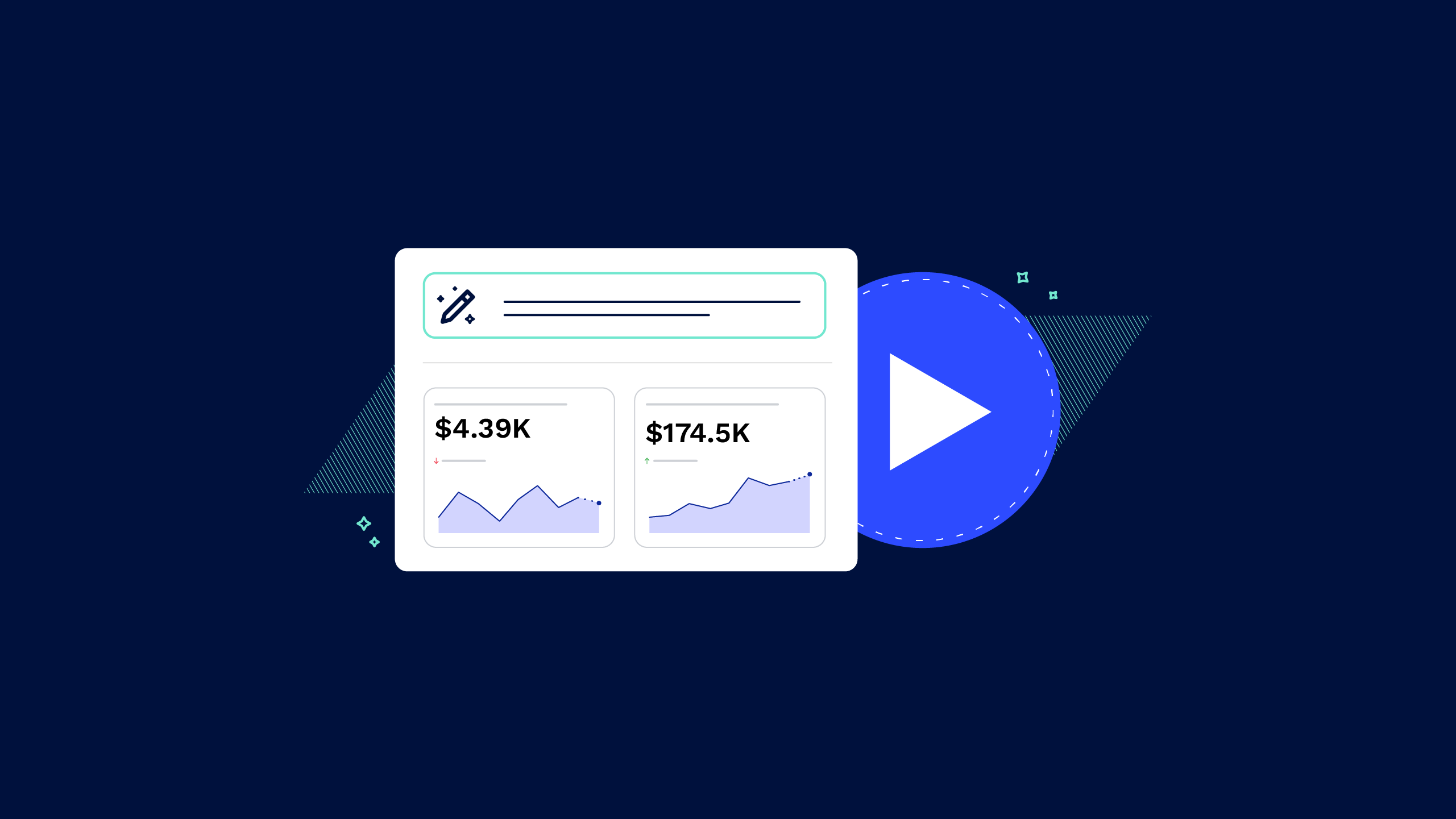John and Darren discuss leveraging data insights to empower firms. They emphasize the importance of capturing and utilizing various types of data to enhance client services and firm productivity.
Full Video Transcript:
John Mitchell: [00:00:00] Hello and welcome. We've got another great episode here for you on the Canopy product. I'm so excited to talk to you today about leveraging data insights to empower your business model. My name is John Mitchell and I'm as always with my friend Darren today. Darren. Hey, John, you're ready to go today.
Ready to go. Let's talk about insights.
Darren Root: Let me set this up just a little bit. So, you know, when you say leveraging data insights to empower your business model, I just want to be clear on how we define a business model. So it is. You know, who you want to serve. So you're going to leverage insights to understand who you want to serve, what you want to sell them, right?
The products that you sell and how you want to deliver that, the technologies that get used to deliver those services. So when we say leveraging insights. Data insights to empower your business model. That's what we're talking about.
John Mitchell: [00:01:00] Yeah. The who, the what, and the how it's something we've been talking about for a really long time.
Just to bring some simplicity to your business model. The truth is the part of the reason we're involved with canopy is because we are so dedicated. Uh, to getting the business model right in your firm. And we believe this product allows you to follow your business model along. And Insights is no exception.
Darren Root: Yeah. I mean, a lot of people think of Insights, John, as reporting in a lot of ways. It's how you get the information that's being accumulated inside of, you know, your firm.
John Mitchell: Yeah.
Darren Root: How do you get insight into that? Um, you know, things like how productive the firm is, you know, what products are being sold.
What's the realization, you know, by staff person, by client, by product, um, you know, all of that kind of stuff. That's what we mean by insights here.
John Mitchell: Well, let's talk about some of those very, those, those kinds of insights. What was it like when you were practicing? I never make, want to make you feel old, but [00:02:00] back when you were using tablets, this way, if you wanted to get, what kinds of things were, were you, you recording, what kinds of things were you getting insights on at that point?
How has that translated into what we're doing now?
Darren Root: You know, um, really when we put practice management into our, our practice, uh, a number of years back, uh, it was largely, you know, time and belling And projects and tasks. So the kind of reports that you could get was, um, really, you know, how much time was being spent on a client, which I think is potentially important.
Uh, and so how you're realizing time off of that, you know, how, what, what your billings were like, uh, and you know, you'd go run these reports. You know, they were always reports being generated and then maybe, you know, what work has been done and what work was yet to be done. So, you know, it was literally those 4 things and you'd go run a report and then you'd go [00:03:00] down through them.
Um, so, you know, in today's world, that feels a bit archaic, you know, and in a product like canopy, you can have this information at your fingertips, you know, on a dashboard. And that's a huge difference, John.
John Mitchell: Of course, all of that information is driven by capturing that data, getting it accurate, getting it all in one place.
One of the things that I love most about this tool is that it takes what is often a pretty disparate approach. Um, set of data points coming from all different kinds of point solutions. And it brings them all into one house and it says, here's your data, all of your data, um, when it comes to this. And, and to me, that just brings this simplicity that makes me want to use this data to do something.
Darren Root: Yeah, essentially inside a canopy, John, you can, uh, they've built this engine, uh, that allows a report to be. Generated or a dashboard to be generated on essentially any field [00:04:00] that data can be captured on inside the system. So it makes it incredibly powerful. So if there's a field in the system, you can report on it.
And that makes it really, really powerful.
John Mitchell: Let's talk just a little bit about the different kinds of data that we're collecting in an accounting firm. You know, this is something that, um, I think it's a really important discussion because the more cognizant and more aware of the data that we can be, the better we are at capturing it.
You know, we, we often talk about data being everywhere. It's almost like it's this invisible thing that's floating around your firm. And. What Canopy does is gives you a place to collect it, to absorb it and to put it in. But I think we, it's still really important to talk about what types of data that we are capturing.
Darren Root: Yeah, I think traditionally the types of data that was, have been captured, you know, for the last 25 years in accounting firms has been, uh, around firm productivity. Um, so if we look at firm productivity as a type of data, um, that's what we've been used to [00:05:00] capturing, but I want to add to that technology data.
So technology data is the data on the technology technologies that your clients are using. So is this client using QBO? Are they using QB desktop? If so, where's that file at and what version is it? That's, that's kind of. Technology data. And the reason that's important as you try to move all of your clients into your technology business model, sort of the back to business model, who, what, and how this is the how piece, this is the how, right?
And we want to collect that data so that our team. Can move those clients into the tech stack that our firm wants to support, which will make you more efficient and more effective. So technology data is one type, the type of data that seems to really swirl around accounting firms with no way of capturing it.
It's, it seems like is the business, the soft data. [00:06:00] Yeah. You know, like is you, you may know things like, Oh, is this client a partnership? But the things that live in people's heads are things like, do they have a buy sell agreement? If they have a buy sell agreement, is that buy sell agreement funded? So those are concepts of soft data, uh, that lives around a firm, but it's, it's the technology data in the, in the business soft data that allows you to make.
Clients better, it's where advisory services really start coming in because if I know I have a partnership as a client and I know they don't have a buy sell agreement, that's an opportunity to make that client better. Or if I know they have a buy sell agreement, but I know it's not funded. That's an opportunity for advisory services.
So all these kinds of data are super important to capture in a firm. And then you want to be able to re report on those different types of data again, like I said, what technologies aren't the clients [00:07:00] using or are using, but then how profitable is this client as you start thinking about curating your texts that are your client, uh, list into the, you know, the, the kind of clients that are ideal clients for you, that client data and how you measure ideal clients is super important.
Does that make sense?
John Mitchell: It does, you know, Darren, when I think about all this data to being leveraged, you know, we use that word leveraging in the title, um, and then the word empowered, like literally to impart power on, I mean, basically what we're doing is saying, how can we use this data to go deeper? With our best customers.
And that's something you and I've talked about for a while, because man, we get so spread thin in accounting firms when we just serve, whoever comes in the door, when we, when we just serve the next person in front of us, instead of saying who, who is our best customer and how deep can we go with them? And the only way to really know that through, uh, throughout the firm is to be able to see that in one place.
And that's what I love about the [00:08:00] way Canopy has set this up.
Darren Root: You know, in my experience, John, running a firm and, and in talking to accounting firms, most firms are, are really a mile wide and inch deep because the time is a limited resource and the amount of time that a firm and their team, the entire firm spends, uh, is, is, Mostly spent doing compliance related work because that's all they have time for because it's such a limited resource on the other side of this is what the client wants from the firm, what the client wants from the firm is for the firm to really be thinking about them as a client and making sure they're holistically serve.
So there's, there's always this sort of. Inconsistent or non congruent pieces, you know, of, of the firm that need to be reconciled so that the, the firm has the time, the [00:09:00] data to holistically serve the customers. Because that's really what the customer wants.
John Mitchell: Man, it's so well said Darren. Well, I can't say it any better than that.
I want to jump in and actually see the product, the insight side of the canopy tool. And there's no better person to do that than our friend Armin. Um, Armin will, is going to give us a little bit of a demo, show you through insights. Um, and then we'll come back and wrap up a little bit with, um, how we believe this can best affect your firm.
Perfect.
Armin Kadic: Let's talk about our insights module on how Canopy helps you track your KPIs, manage reports, and see exactly what's going on at the heart of your firm. Navigating to insights here, Canopy gives you the ability to create all of your own custom reports and dashboards. We pull in all the different data points from the different modules that are inside Canopy and allow you to go through and select any of those data points that you want and format your own custom reports.
Not only do [00:10:00] we give you the ability to format custom reports, but we've built live boards and report templates that can be used for your firm right out of the box. These, these templates and dashboards that we're going to show can be customized further if you want to add additional KPIs or metrics, or you can use them as is.
Jumping into the billing realization report that we have, this quickly allows me to analyze a realization summary client by client so I can see how profitable we are, how much we're billing, and are we making or losing money on our overall clients. If you drill down into the clients, you can see the team members that are spending time across the client base, And how efficient they're being.
Navigating through the different fields that we have in this report, you'll notice I have the ability to aggregate, filter, and sort the different fields that are available. This allows you to quickly [00:11:00] sort and see who your most profitable or least profitable clients are if you plan on making changes in the future.
Across the top, you'll also notice that I can quickly filter this report into service items so I can see what my most profitable services are. I can filter the report by team members so I can see how each team member is doing across the different services that we offer. For And I can also filter this by tasks.
So I can see how we're doing across our work. Are we being efficient and are we making money to, for the company as far as what we need to be doing. Canopy also has a budgeted versus actual report that was recently built in and added that I wanted to share. This report does a good job of highlighting how many tasks are active in the firm, how much time has been budgeted across these tasks and jobs.
Okay. [00:12:00] and how much time we have left to complete the jobs that we are actively working on. This report goes in and gives me a weekly budgeted report, a monthly budgeted report, and an annual budgeted report. You can see across the report it's going to show total budgeted hours, available budgeted hours, budgeted utilization percentage, Actual hours, actual available hours, and then actual utilization percentage.
This is assuming based on a 40 hour work week or a 172 hour, whoops, 175 hour work month. Makes it, we make it really easy to create different reports as we can slice and dice the data in different ways. and help you track all of the KPIs that are relevant to your firm. These reports are just sample reports, some sample reports of dashboards that we've made available to [00:13:00] you.
You can create your own or further customize the reports that we have in Kanopy.
John Mitchell: Thanks, Armin. Man, Darren, the power there, um, that word in power really comes out when you see what all this tool can do and really just what capturing the data in your firm can provide for your team can provide for that clarity that your customer is looking for, um, in the way that you serve them.
Darren Root: Yeah, I just. Think that if you're watching the, you know, if you just watched Armin's demo, you know, it's important to see that, you know, firm productivity is still, you know, is still an important piece of your firm wide operating system. It is as is realization and those things are accounted for in the platform, but then also, you know.
Client productivity, such an important factor as you, as you go after those ideal clients and then this idea of budgeting versus actual. And you can see that canopy really has done a fantastic job of, [00:14:00] uh, bolstering and creating, you know, a world class insights tool.
John Mitchell: You know, Darren, I've got a conversation, um, on a monthly basis with a, an accountant friend of ours named Terry, um, who talks about being a mile wide and an inch deep in his firm.
That's where that phrase comes from. And it reminds me that when I talked to him last, he talked about leveraging. Data in his firm and what it means to his firm, but also what it means to his team and to him himself. He said, I've been doing this a really long time and I feel re energized by going deeper.
He has been frustrated his whole career with this idea of advisory services. And capturing that data is the gap between being able to pull off advisory services and just talk about it.
Darren Root: It is John. Uh, I do believe that, you know. Canopy is a tool that can help people like Terry do [00:15:00] this.







Get Our Latest Updates and News by Subscribing.
Join our email list for offers, and industry leading articles and content.